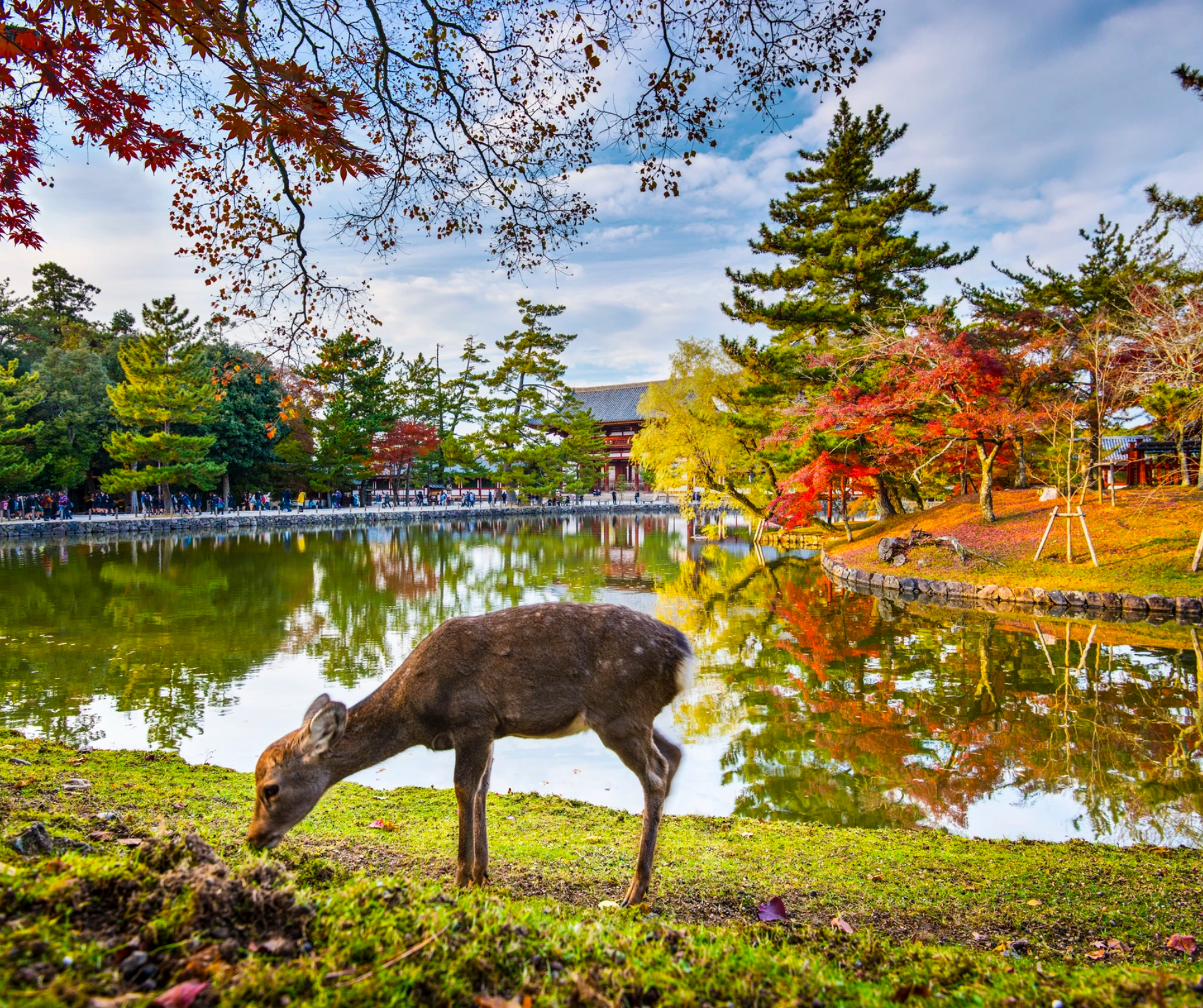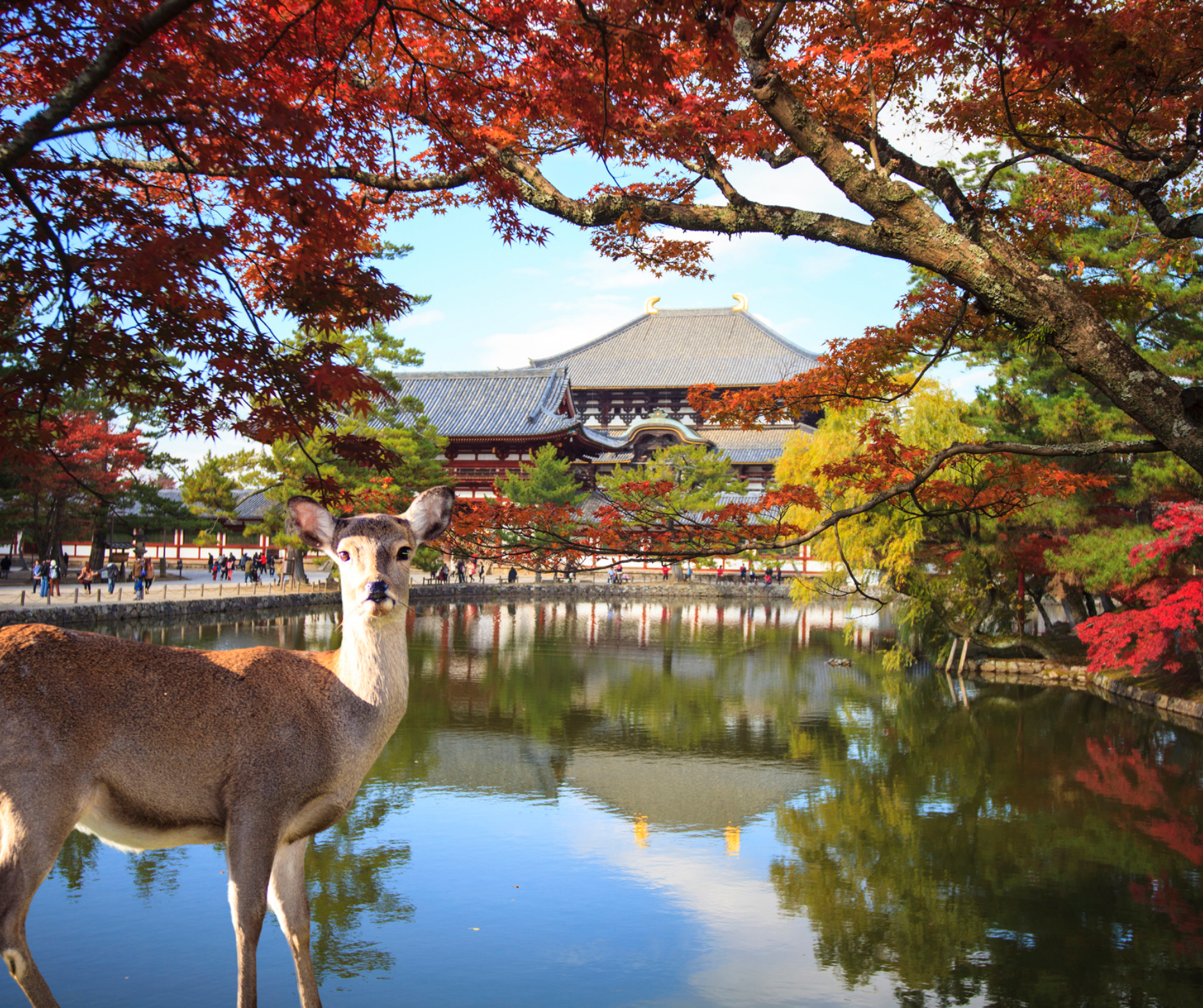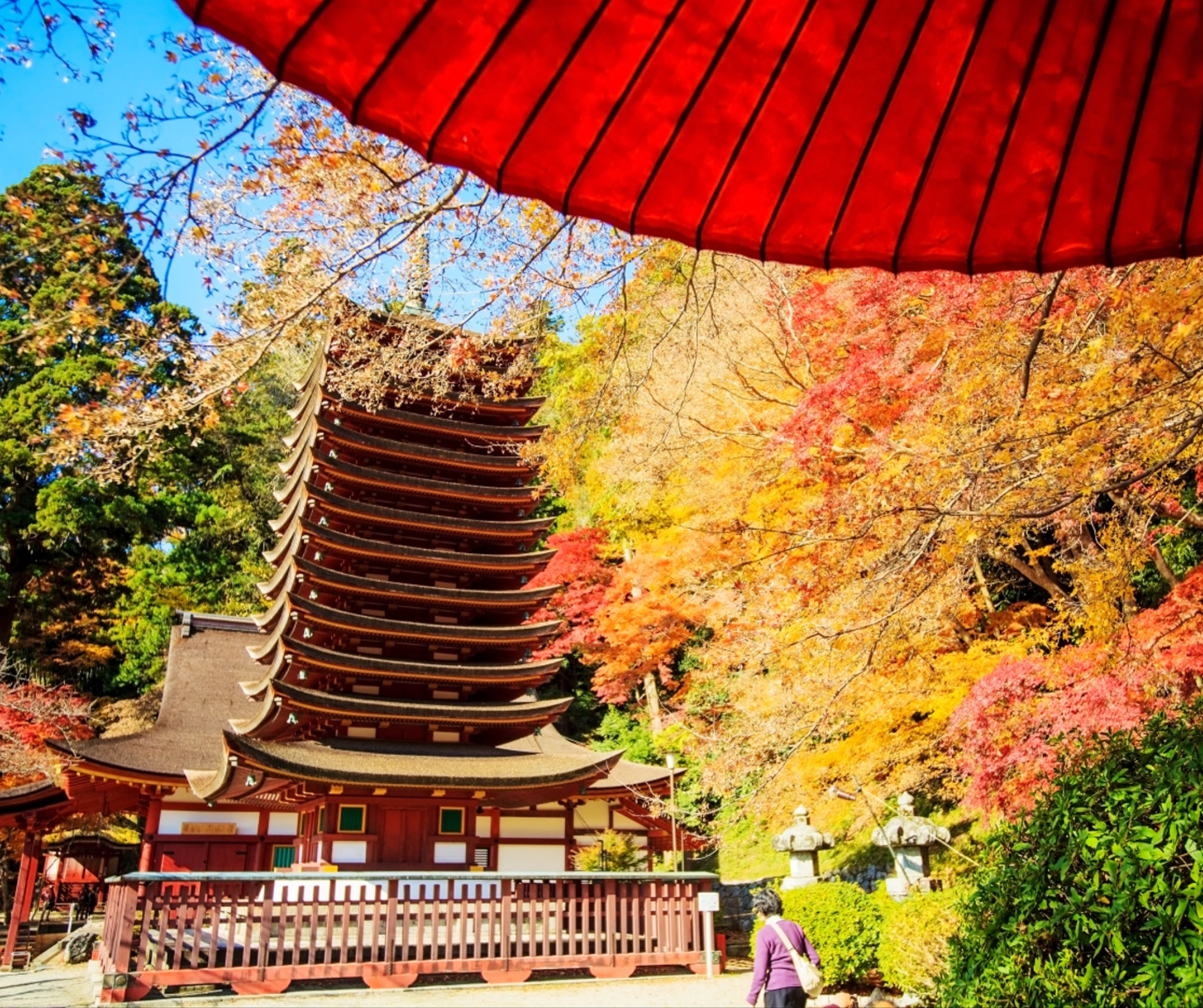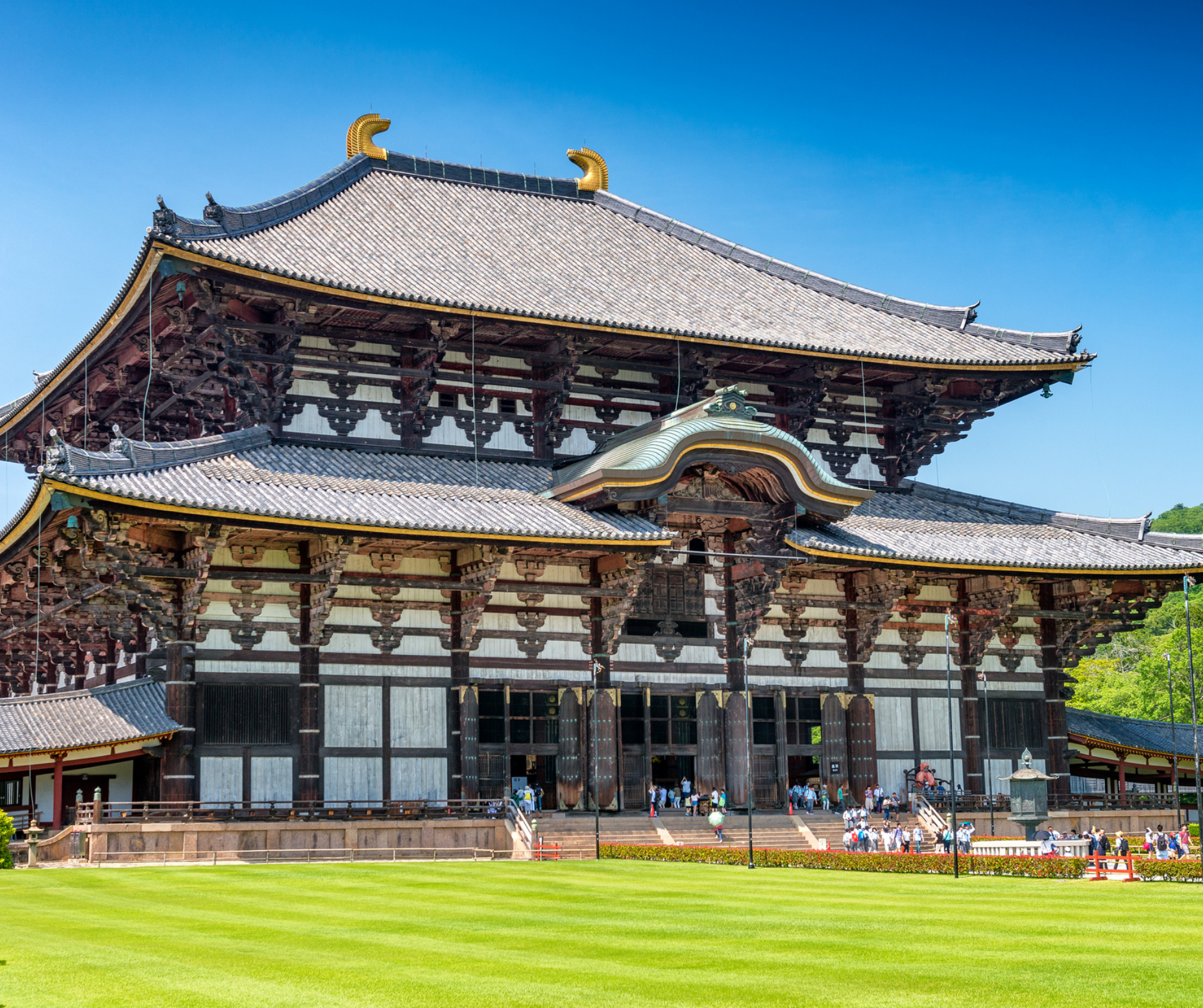Nara is not just a beautiful city but also a destination rich in history and culture. Known as Japan’s first capital, Nara carries ancient stories and invaluable cultural heritage. Did you know that Nara was the political and cultural center of Japan from 710 to 794? Yes, and that is just the beginning!

Nara’s Rich History
The history of Nara begins in the Nara period (710-794) when the city was chosen as Japan’s first capital under the name Heijō-kyō. With temples, shrines, and ancient architecture, Nara is a place that preserves many stories and cultural heritage.
Tōdai-ji Temple: The Symbol of Nara
Todaiji Temple, located in Nara, Japan, holds a rich history dating back to the 8th century. Established in 752 by Emperor Shomu, Todaiji was originally known as Kinsho-ji and served as the head temple of the influential Kegon school of Buddhism. The temple played a pivotal role in the political and religious landscape of ancient Japan.

The iconic Great Buddha Hall (Daibutsuden) of Todaiji is a testament to the temple’s grandeur. Constructed in 752, it once stood as the world’s largest wooden building until a fire in the 16th century reduced its size. Despite subsequent reconstructions, the hall remains an impressive structure housing a colossal bronze statue of Buddha Vairocana, known as the Daibutsu. The Daibutsu, cast in 749, stands at 15 meters tall and is a symbol of Buddhist art and devotion.
Todaiji Temple has weathered centuries of challenges, including fires and earthquakes, yet it continues to stand as a UNESCO World Heritage Site and a symbol of Japan’s cultural and religious heritage. Visitors today can marvel at the historical significance and architectural brilliance of Todaiji while experiencing the serene atmosphere of one of Japan’s most revered Buddhist temples.

Nara Park and Friendly Deer
Nara Park is a must-visit destination when in Nara. This park is not only famous for its stunning scenery but also for the hundreds of freely roaming deer. These deer are considered messengers of the gods according to Shinto beliefs and are very friendly to visitors.
Kasuga Taisha Shrine: Mystical Beauty
Kasuga Taisha Shrine is one of the important Shinto shrines in Japan. The shrine is renowned for its thousands of stone and bronze lanterns hanging around the area, creating a mystical and beautiful scene, especially during the lantern festivals.

Exploring Kōfuku-ji Temple
Kōfuku-ji Temple is an important Buddhist temple with many cultural heritages. This place was once the center of Buddhist doctrines and still retains many precious artifacts from ancient times.
Nara National Museum: Cultural Treasure
Nara National Museum showcases many important cultural and artistic artifacts from the Nara period. Here, you will have the opportunity to learn more about Nara’s history and culture through carefully preserved artifacts.

Festivals and Special Events in Nara
Nara hosts many unique festivals and events throughout the year. From the Kasuga Lantern Festival to the On-Matsuri, each event offers unique and exciting experiences.
Local Cuisine in Nara
The cuisine in Nara is not only delicious but also diverse and rich. When in Nara, don’t forget to try local specialties like Kakinoha-zushi (persimmon leaf sushi) and Miwa somen (cold noodles). You can easily find these dishes at local restaurants and eateries.

Nara is truly an unmissable travel destination in Japan. With its rich history, unique culture, and stunning landscapes, Nara promises to offer you unforgettable experiences. Pack your bags and set off to discover Nara today with AV Travel this coming autumn season!
https://avtravel.com/tour/japan-in-autumn-2/
https://avtravel.com/tour/autumn-leaves-japan-korea/
https://avtravel.com/tour/japan-in-autumn-colorsjapan-indonesia-bali/

